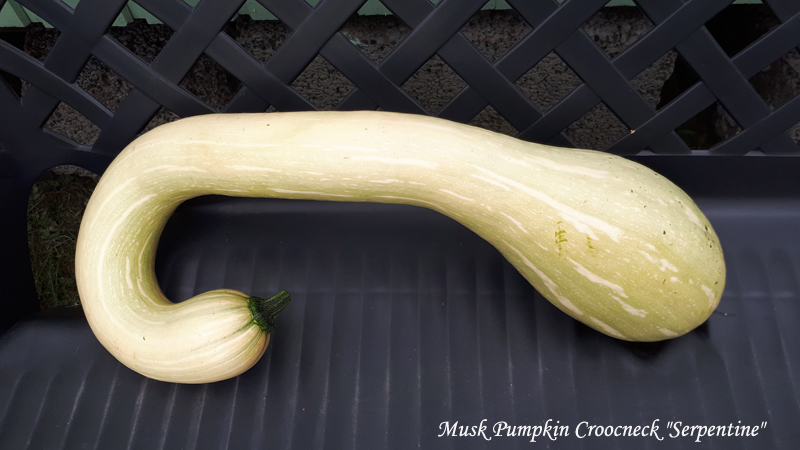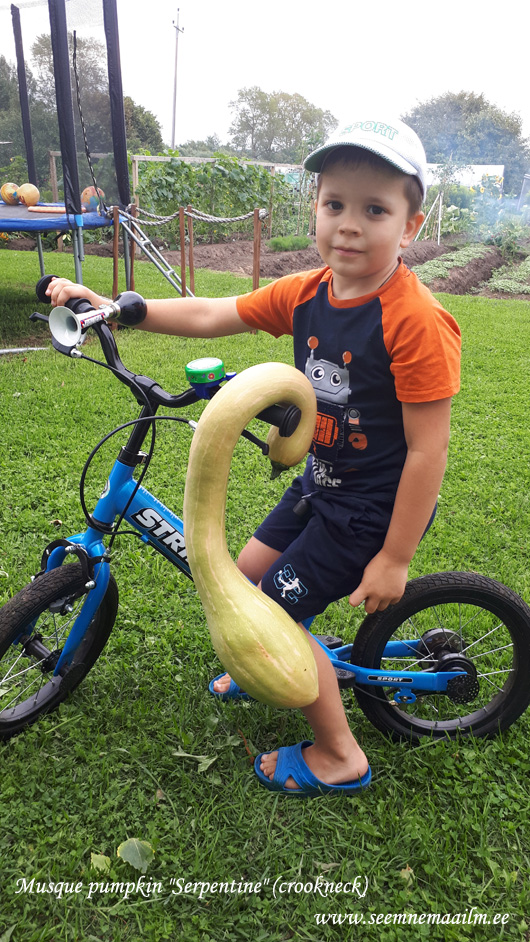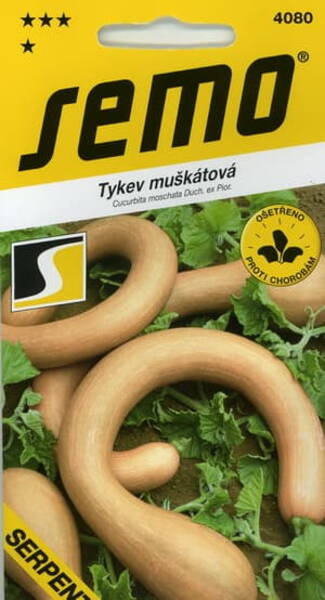Ex Tax: 40.21€
Pumpkin surpasses many vegetable crops in the content of carbohydrates, pectin substances, vitamins and mineral salts.
Pumpkin is of particular value as a dietary product. The best table pumpkins are considered nutmeg.

* Musque pumpkin (crookneck) comes from the tropical coastal regions of Central America and Mexico.
Musque squash includes six subspecies: Turkmen (weakly segmented), Japanese (deeply segmented, strongly wrinkled, or warty), Mexican (woody bark, sweet mealy pulp), Colombian (pepper-shaped fruits), North American (fruits are small, medium, from flattened to cylindrical shape) and Indian (the fruits are very large, brightly coloured, have a spherical and oval shape).
One of the species signs of nutmeg gourds is the presence of aerenchyma - white or silver spots on the leaf surface. Aerenchyma reflects part of the sun's rays, which helps to reduce water consumption.
Musque squash varieties are rich in carotene (up to 26 mg per 100 g of fresh weight). All of them are late maturing. Medium- and long-braided (lashes up to 4–6 m) varieties are known.
The wide distribution of crookneck pumpkins in our country is hindered by their thermophilicity.
However, this pumpkin ripens perfectly even in Estonian conditions when grown through seedlings (sowing seeds in pots for seedlings on April 20–25, planting in the open ground after spring frosts on June 4–6, by which time the plants have 2–3 true leaves).
It is necessary to harvest the pumpkin before the first frost. Butternut squash keep well, in some cases they can be stored until June. The edibility of the seeds has been questioned.
Unlike other species, the seeds are very small, have a hard shell. In addition, their fruit contains, as a rule, a little. They are located in the lower part of the fruit, and the rest is solid pulp.
Butternut squash fruits are predominantly cylindrical in shape, there are also varieties with a fruit shape from flattened to pitcher-shaped, with a smooth, segmented and tuberculate surface.
The colour of the fruit bark is most often green with intermittent stripes until autumn, less often light beige. When ripe, the background brightens and becomes reddish-yellow or cream, and the net pattern takes on a dull orange color.
Immediately after harvesting, the pulp of the fruit has a pale shade (beige or light orange) with a slight nutmeg aroma (the pulp has a bland taste).
During storage, the pulp acquires an orange hue, while the nutmeg flavor is enhanced, and the sugar content also increases.
When grown in Estonian conditions, maturity occurs at least 2 months after harvest.
The pulp of a ripe pumpkin contains a lot of carotene, it is tasty and healthy, edible raw. Pumpkin can be added to fruit preserves (up to 25%), which improves their quality.
As a side dish or in meat dishes, pumpkin is not suitable due to the high sugar content in the pulp.
However, it is quite suitable for all kinds of cereals, pies, casseroles, jams, juices, candied fruits and other similar dishes.
During extra-long storage (more than 5–6 months), the pulp breaks up into fibres, loses its valuable taste, and the sugar content decreases.
Such a pumpkin can be used for processing because it is inedible in its raw form.

Eng.: Musk Pumpkin Croocneck. Suom.: Myskikurpitsa. Sven.: Myskpumpa.












